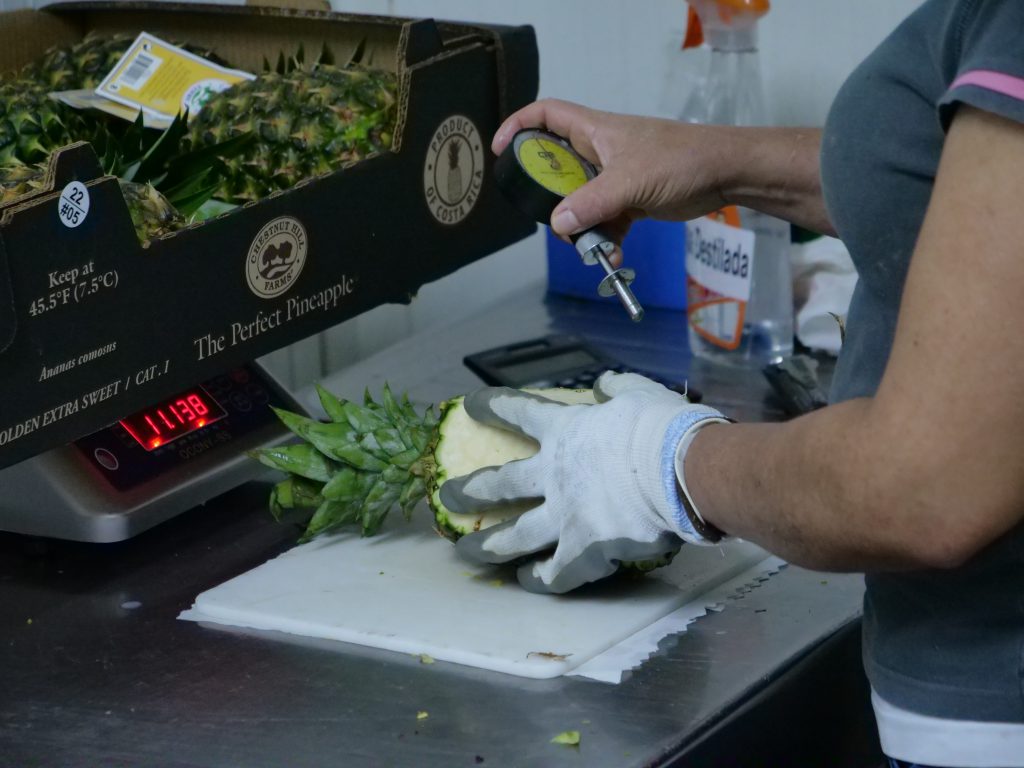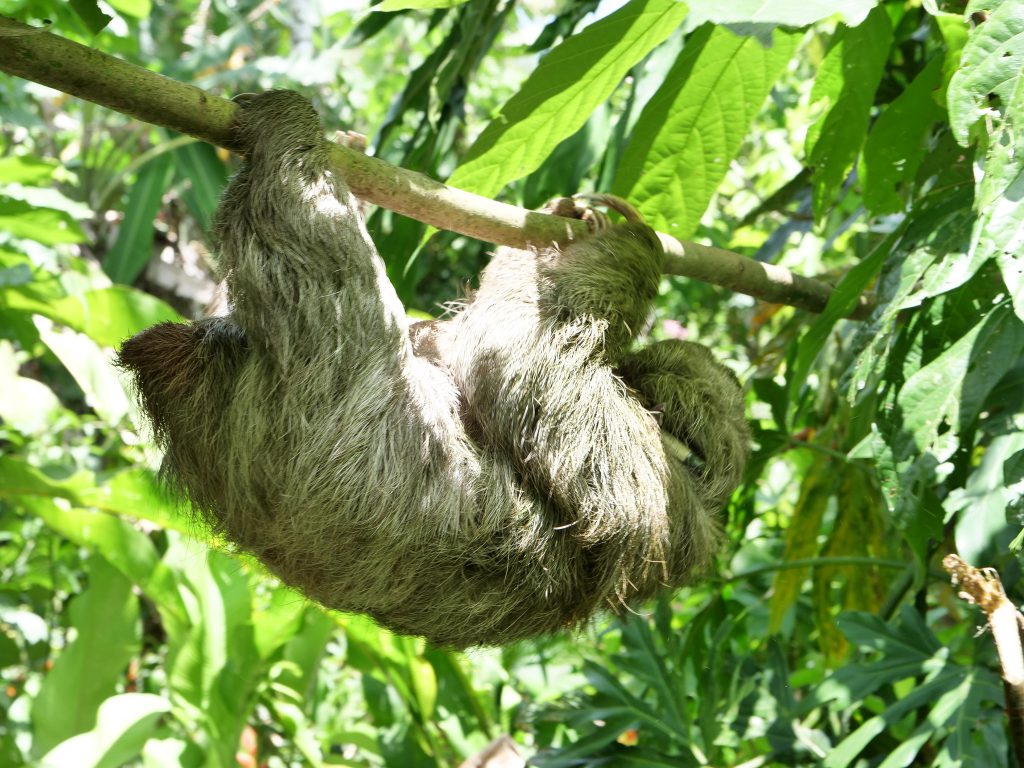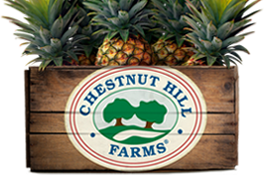The Secret Behind the Perfect Pineapple

Here at Chestnut Hill Farms, we pride ourselves on producing the perfect pineapple. From its perfect golden hue to its tall crown to its delicious flavor, anyone who samples our fruit knows that it’s something special. But what makes our pineapple so unique? Explore the many steps we take to make sure our pineapples are perfect below.
All About the MD2 Pineapple
Believe it or not, pineapples come in a wide variety. From some that are more acidic to others which are ideal for canning, not all pineapples are the same. At Chestnut Hill Farms, we grow the sweetest, most aromatic pineapple available: the MD2.
A unique hybrid, developed in Hawaii in the 1970s, the MD2 offers a beautiful golden color, low acidity, and delicious flavor. Where the plant’s predecessor, the Smooth Cayenne, was highly acidic, the MD2 is much more uniformly sweet. Additionally, the MD2 is higher in vitamin C, offering greater nutritional benefit to those who eat it. The plants were introduced to Costa Rica in the mid-80s and grew incredibly popular in Europe and the United States in the following decade. Thanks to the MD2’s longer shelf-life, they can be shipped around the world while still fresh. At Chestnut Hill Farms, we combine this long lifespan with closeness to the port city of Limon, Costa Rica, meaning short transit times and perfectly ripe pineapple for all of our global partners.
The Growing Process
Each step of our growing process is designed to produce the perfect pineapple, every time. Some of these steps include the following:
- Soil Preparation
We prepare our soil for planting through five different steps, aerating the soil for root development, adding necessary minerals for growth, planning drainage systems to avoid excess water, and more. - Planting
Our pineapples are grown from seeds harvested from the previous crop. From these, we choose only the best to be used, graded by size and quality. These seeds are then planted as quickly as possible to provide them with the best possible opportunity for growth. Planting is done by hand, carefully and in uniform rows, ensuring the plants receive equal amounts of sunlight and nutrients. - Testing
Pineapple plants begin to flower about 7 to 8 months after planting. Once the fruit is large enough, typically 20 weeks later, we test it weekly to determine when it is ready to harvest. Pineapples are sampled for their sugar content (or Brix) and color. - Harvesting
Once the pineapple is ready, we harvest by hand. As compared to machine harvesting, this process is slower but more delicate, protecting the pineapple from potential bruising and damage.
Monitoring Sugar Content

Making sure our pineapples are perfect means consistent testing and monitoring: once the pineapples have been gathered, the fruit’s sugar content is tested to ensure it is sweet and ripe. Because pineapples don’t continue to ripen once they’ve been harvested, this step is imperative to maintain consistent quality. We test random pineapples from each ready-to-ship pallet as a final check before sending the fruit on its journey to you.
Maintaining Sustainability

As a Sustainably Grown certified farm, we believe that pineapples taste extra sweet when they’ve been grown with care for the environment. We take care to prevent soil erosion during planting, recycle organic matter into our soil, and maintain over 275 hectares of natural forest, reducing our carbon footprint.
Also, we use herbicides and pesticides only when necessary. We monitor our pineapples throughout their growing process, watching carefully for insects or disease. Determining our chemical use by need, instead of on a consistent schedule, helps reduce the impact of them on our fruit and means the pineapples are fresh and natural.
To learn more about our growing process, enjoy our slideshow of each step taken for the perfect pineapple. Plus, to keep up with all pineapple news and information, sign up for our newsletter today.


